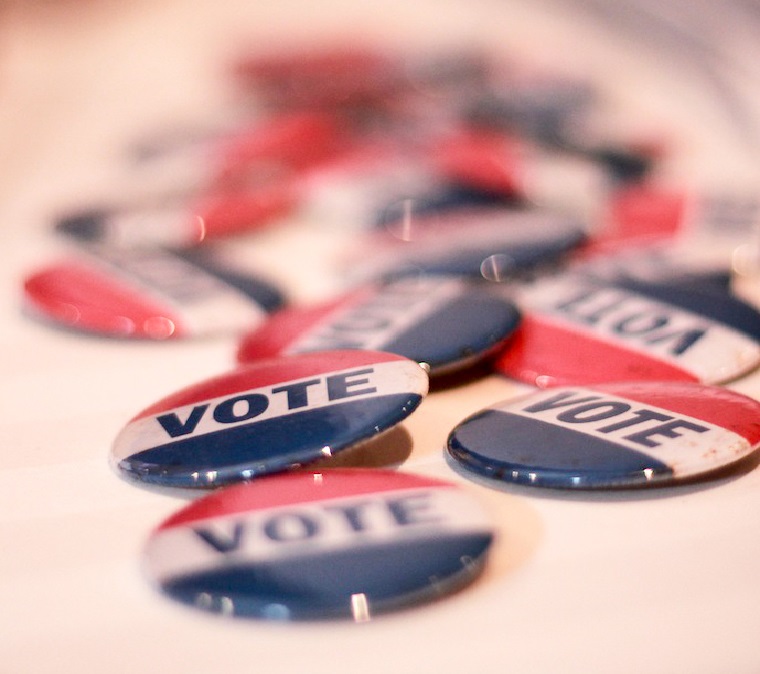 Photo Courtesy of GPA Photo Archive on Flickr
Photo Courtesy of GPA Photo Archive on Flickr
The Challenge of Election Security
The Senate Intelligence Committee released a report last Thursday revealing that Russian interference reached all 50 states in 2016. As the 2020 primaries approach, our country’s vulnerability to foreign election interference has never been clearer, and the need to institute concrete defense mechanisms has never been more important.
Senator Richard M. Burr (R-NC and Chairman of the committee) wrote that “in 2016, the U.S. was unprepared at all levels of government for a concerted attack from a determined foreign adversary on our election infrastructure.” He goes on to state that in the past three years, much has been learned about Russian activities and capabilities. But whether we are more prepared going into the 2020 election than we were three years ago remains an open question.
Deep Roots
Russia has a long history of using propaganda and disinformation to interfere in American elections, and the U.S. is scrambling to catch up. In 1947, Stalin created the Committee of Information, a shadow organization that ran undercover operations to influence public opinion. In 1960, Nikita Khrushchev offered to provide propaganda to support Adlai Stevenson’s presidential run. In 1968 the Soviets extended an offer to secretly fund Hubert Humphrey’s campaign. In an effort to prevent anti-communist Henry Jackson from gaining support after Nixon’s resignation, Soviet spies used forged documents in 1976 to circulate rumors that he was secretly gay. In 1984, the Soviets launched a large-scale disinformation effort to undermine Ronald Reagan’s campaign.
When the Cold War ended in 1991, the use of such tactics became less commonly reported. Yet Russian attempts to influence American politics via disinformation continued, and the 2016 episode is only the most widely known instance. For example, former ambassador to Russia Michael McFaul spoke about how he was the target of Russian disinformation campaigns as recently as 2014 which used “deepfake” technology to spread a false claim that he was a pedophile.
America’s Vulnerability to Disinformation
The Senate Intelligence Committee’s report claimed that Russian cyberactors were “in a position to delete or change voter data” in the Illinois voter database. Although no evidence was found indicating that they took advantage of this, Russia’s ability to gain access to our election infrastructure emphasizes the system’s physical weaknesses. But our vulnerability goes beyond infrastructure, since the susceptibility to disinformation is pandemic throughout society. In an age of digital, 24-hour news, the public is far more likely to believe false stories.
In analyses of the 2016 interference, experts concluded that the Russian actors utilized troll factories and bot accounts to target the American public on key divisive issues. Dubbed “cyber-enabled information warfare,” this method of spreading disinformation exploits characteristics of the modern information sphere: the combination of a plethora of online/social-media based news sources and a public that is both less informed and more prone to clickbait.
Exacerbating Divisions
The hyperpolarization of today’s politics creates a perfect environment for foreign actors seeking to sew chaos within our country at key moments during electoral contests. In 2016, Russian operatives created false Facebook advertisements for topical issues such as gay rights, Black Lives Matter, and immigration. Russia Today’s efforts to spread doubts about 5G technology achieved same goal: to exacerbate ideological and political divisions already existing within the American public. The same tactic was used when state-sponsored media outlet Sputnik published stories on the “yellow vest” protests in the lead-up to European Union parliamentary elections.
Playing Defense
ASP has previously recommended several steps the U.S. should take to secure our electoral process: strengthening the Election Assistance Commission, providing states with federal resources if needed, and developing state-level contingency plans. These steps are central to protecting our electoral infrastructure from further direct attacks.
It is far more difficult to defend against the spread of disinformation, partly due to the complications of passing limits on social media postings due to First Amendment rights. One route could be investment in media literacy education. Programs at the state and local level aimed at enhancing critical reading and analytical skills among children and youth could take a big step in ensuring that future voters are not fooled by sophisticated disinformation campaigns. There is a role for the private sector as well; Apple has already teamed up with NGOs in the U.S. and Europe to encourage news literacy in the digital age. Recent research has highlighted the need to extend these kinds of educational programs to the adult population.
The Senate Intelligence Committee’s suggestions for strengthening election security—creating paper backups of registration systems and adopting a doctrine for cyber deterrence—will fall short if a society-wide effort to combat disinformation is not undertaken.





